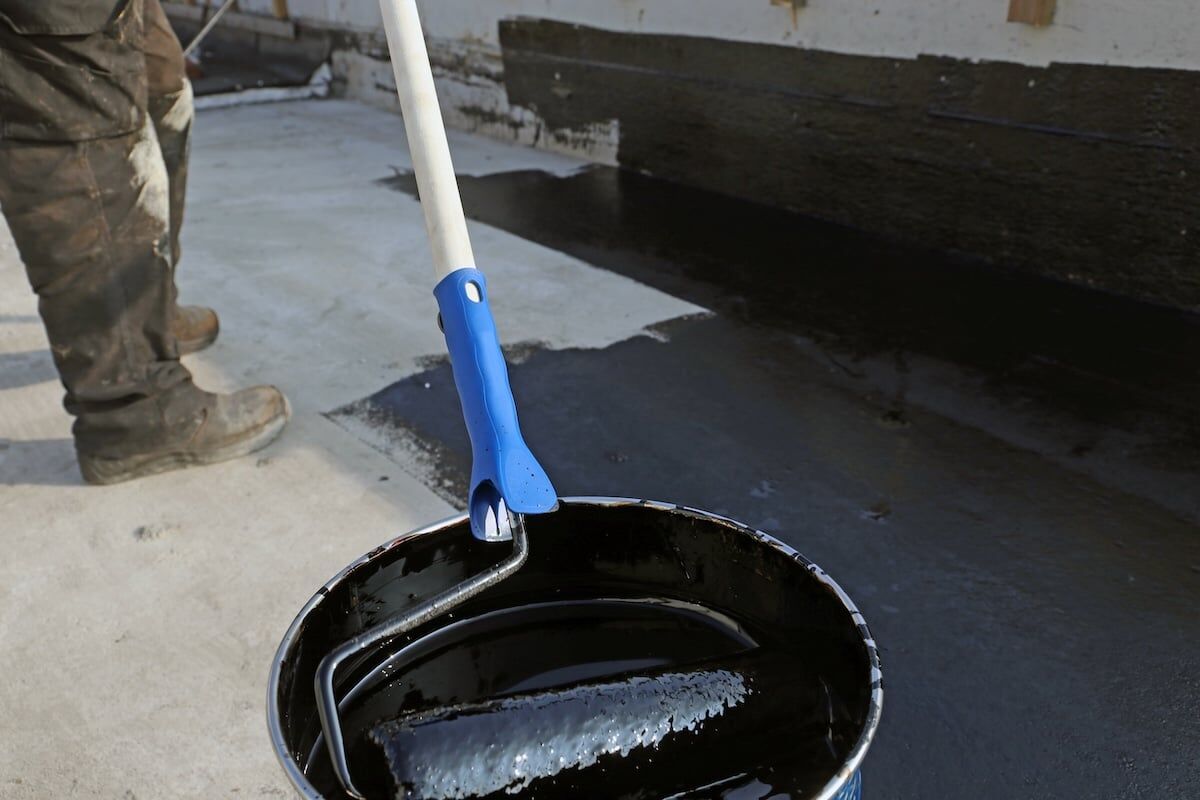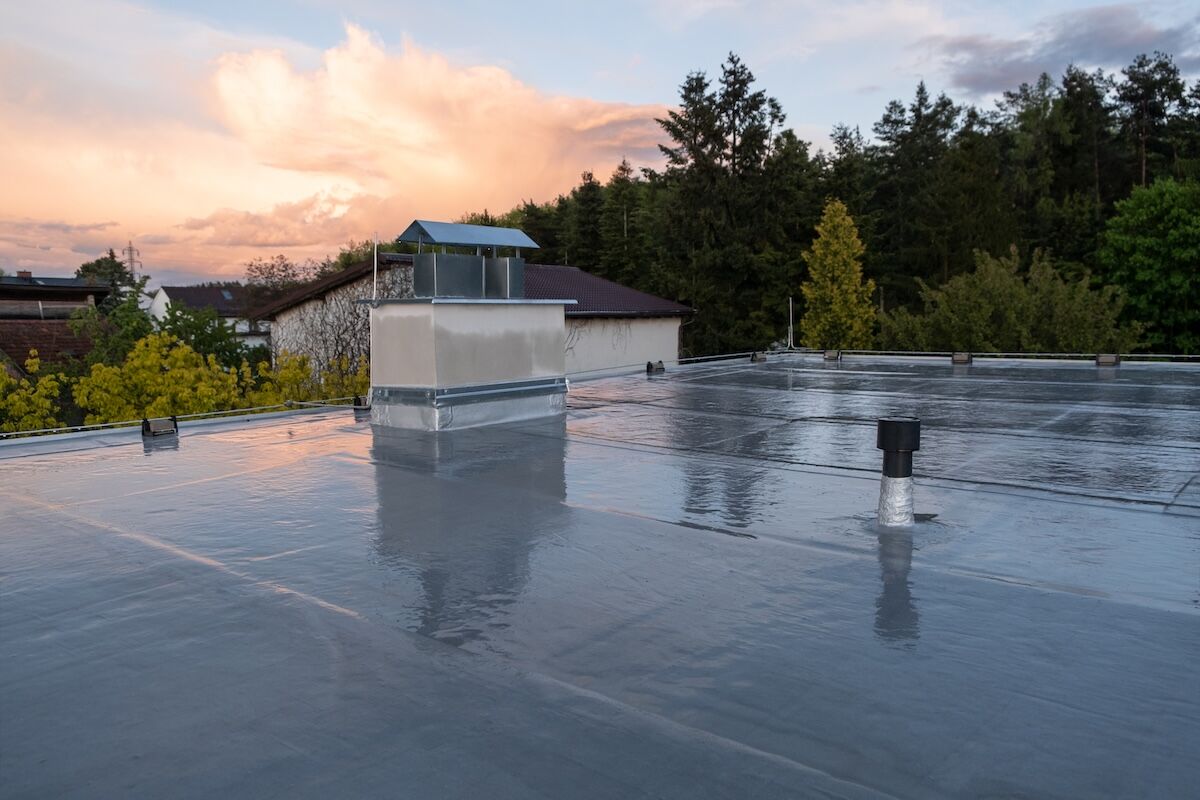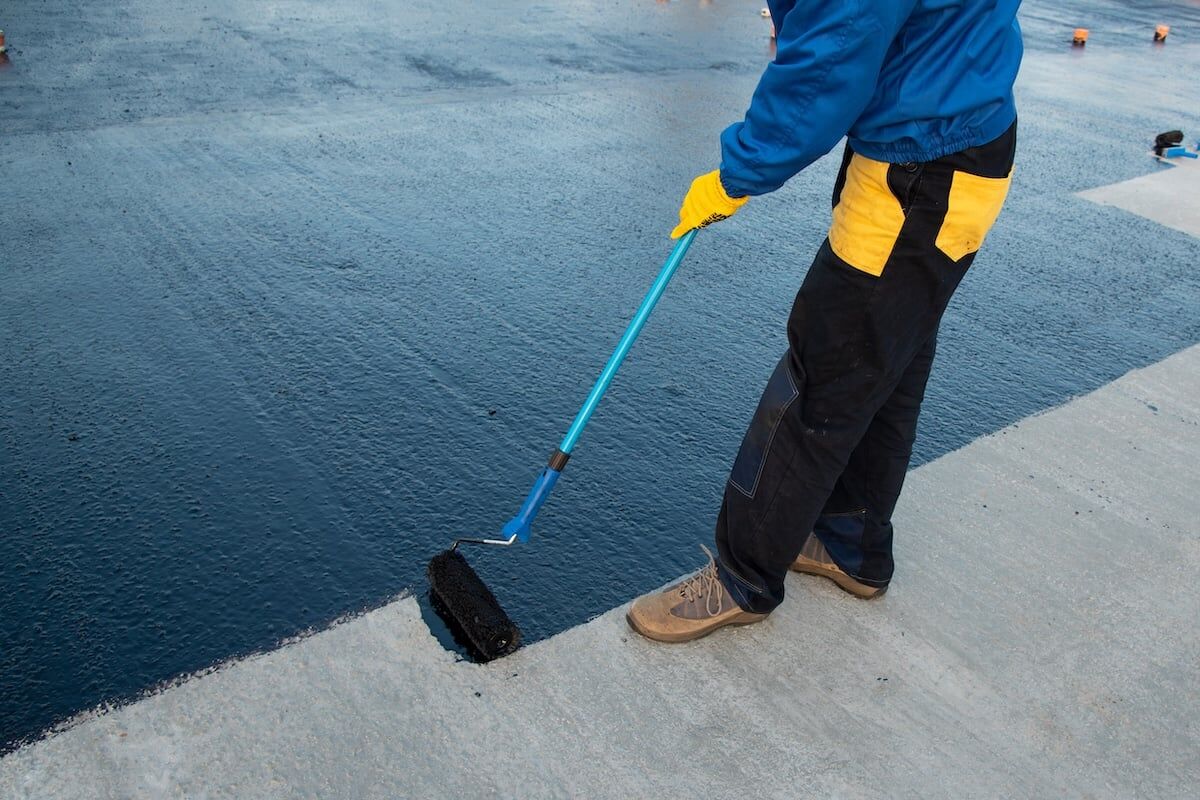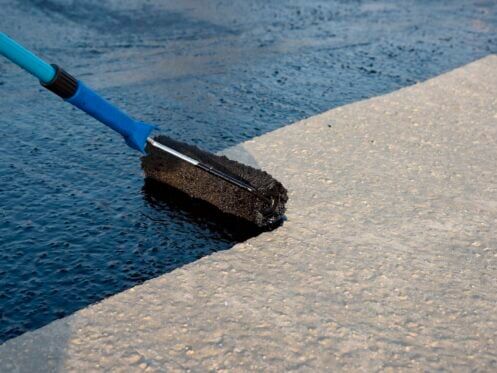Roof sealant is a protective coating applied to your roofing system to extend its life, prevent leaks, and improve energy efficiency. Many homeowners are unaware of how sealants work or when they should be used, but understanding this option can save you from unnecessary repairs and provide extra peace of mind.
- Added protection: Sealants safeguard against leaks, UV rays, and weather damage.
- Cost efficiency: Applying sealant can extend your roof’s lifespan without the expense of replacement.
- Versatility: Roof sealants work on a variety of materials, including metal, asphalt, and flat roofing systems.
🤔 What Exactly Is Roof Sealant?
Roof sealant is a liquid-applied protective barrier that cures into a solid, waterproof layer. It’s typically applied to the roof surface after cleaning and repairs are completed. Unlike traditional roofing materials, sealants are designed to coat and seal the entire system, preventing moisture from entering weak points and reinforcing vulnerable areas. Some sealants are reflective, which helps lower cooling costs by deflecting heat.
For Indiana homeowners, roof sealant provides an extra layer of confidence against the state’s unpredictable weather — from spring downpours to winter freeze–thaw cycles. It’s not a substitute for repairs or replacement when damage is severe, but it can be a powerful tool for extending the life of a well-maintained roof.

👉 The Different Types of Roof Sealants
There isn’t a one-size-fits-all option when it comes to sealants. Each type offers unique benefits depending on your roof’s material and condition.
Roof Sealant Types
- Acrylic sealants: Cost-effective and UV-resistant, often used on sloped roofs.
- Silicone sealants: Highly durable and excellent for flat roofs because they resist ponding water.
- Polyurethane sealants: Flexible and impact-resistant, making them ideal for roofs exposed to hail or debris.
- Asphalt-based sealants: Commonly used with traditional asphalt shingles, providing strong waterproofing.
A professional contractor evaluates your roof and recommends the right product, since applying the wrong sealant can cause more harm than good.
⏰ When Should You Use Roof Sealant?
Applying sealant is not always necessary, but in the right situations, it’s an excellent investment.
- Extending roof life: Sealants provide an extra layer of defense that can add 10–15 years to your roof’s lifespan.
- After minor repairs: Sealant helps lock in repair work and prevents small cracks or patches from worsening.
- Flat and low-slope roofs: These systems are more prone to ponding water, making sealants a highly effective safeguard.
- Energy savings: Reflective sealants help lower cooling bills during hot Indiana summers.
- Preventing leaks: Adding sealant creates a continuous barrier against water intrusion in vulnerable areas.
✅ The Benefits of Roof Sealant for Indiana Homes
Indiana homeowners face challenges from heavy rains, snow, and extreme temperature swings. Roof sealants are particularly useful in this climate because they:
- Handle freeze–thaw cycles: Sealants flex with temperature changes, reducing the risk of cracks.
- Resist ponding water: Essential for flat commercial and residential roofs.
- Reduce storm damage risks: Added flexibility helps absorb impact from hail or wind-driven debris.
- Support sustainability: Extending your roof’s lifespan means less waste in landfills.
By using the right product, sealants add a valuable layer of defense against the very conditions that cause roofs to fail prematurely in Indiana.

❗️ Limitations of Roof Sealants
While sealants are valuable, they are not a substitute for proper roof repair or replacement.
- Not a permanent fix: Sealants extend roof life but do not replace a failing roof.
- Require professional application: DIY applications often fail due to improper preparation or uneven coverage.
- Maintenance needed: Sealants may need reapplication every 5–10 years, depending on the product.
- Limited effectiveness on severe damage: If your roof has extensive leaks or structural issues, replacement is the only real solution.
Homeowners should see sealants as part of a comprehensive maintenance plan — not a cure-all.
📋 Roof Sealant vs. Roof Replacement
One of the most common questions homeowners ask is whether they can use roof sealant instead of paying for a full replacement. The reality is that sealant is only effective if your roof is still structurally sound.
- Sealant is best for: Minor wear and tear, small cracks, and preventative maintenance.
- Replacement is best for: Advanced age, major leaks, structural damage, or widespread shingle failure.
Choosing sealant when a roof is beyond repair only delays the inevitable and wastes money. A professional inspection ensures you’re making the right call.
🏢 5 Steps: How Roof Sealant Is Applied
The application process is as important as the product itself. A quality sealant job involves:
- Thorough inspection: Identifying any existing damage that needs repair before coating.
- Cleaning: Removing dirt, debris, and algae to ensure proper adhesion.
- Minor repairs: Fixing cracks, seams, or flashing issues before sealing.
- Application: Evenly spreading the sealant across the surface, often in multiple layers.
- Curing: Allowing the coating to harden and bond, creating a watertight barrier.
Skipping any of these steps drastically reduces the effectiveness of the sealant. That’s why professional application is critical.
❌ The Risks of DIY Roof Sealant Application
It may be tempting for homeowners to buy a bucket of sealant and apply it themselves, but this usually causes more harm than good.
- Improper preparation: Without cleaning and repairing the surface first, sealant won’t bond correctly.
- Uneven coverage: Missed spots or thin layers leave vulnerabilities.
- Wrong product selection: Using the wrong sealant type can damage the roofing material.
- Safety hazards: Climbing onto a roof without training is a major safety risk.
Professional application ensures the sealant works as intended, protects your roof, and avoids voiding manufacturer warranties.

⭐️ How to Know If Roof Sealant Is Right for You
Deciding whether to use sealant comes down to your roof’s current condition and long-term plans for your home. If your roof is in good shape but showing minor signs of wear, sealant may be the perfect way to buy more time before replacement. For aging or heavily damaged roofs, however, sealant will only delay the inevitable.
🤝 Protect Your Roof With Professional Guidance
Roof sealant can be a smart, cost-effective way to extend the life of your roof, but it’s not a solution for every situation. The key is having a professional inspection to determine whether sealant is the right investment for your home.
At Indy Roof & Restoration, we evaluate your roof’s condition, recommend the best type of sealant for your needs, and ensure expert application for maximum protection. Contact us today to find out if roof sealant is the right choice for your home.

